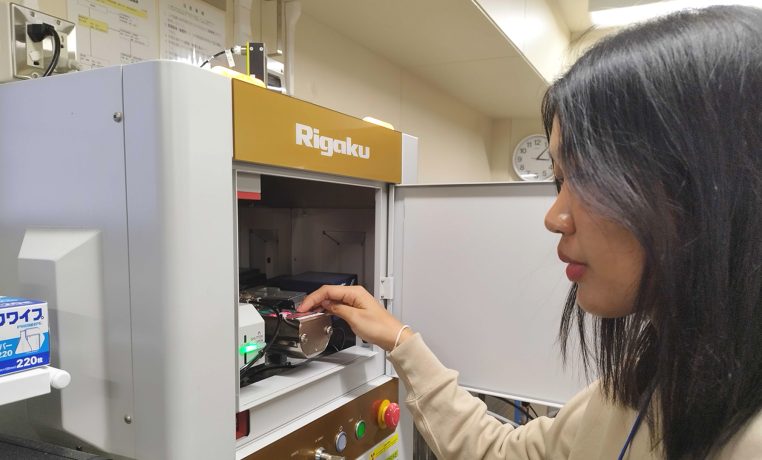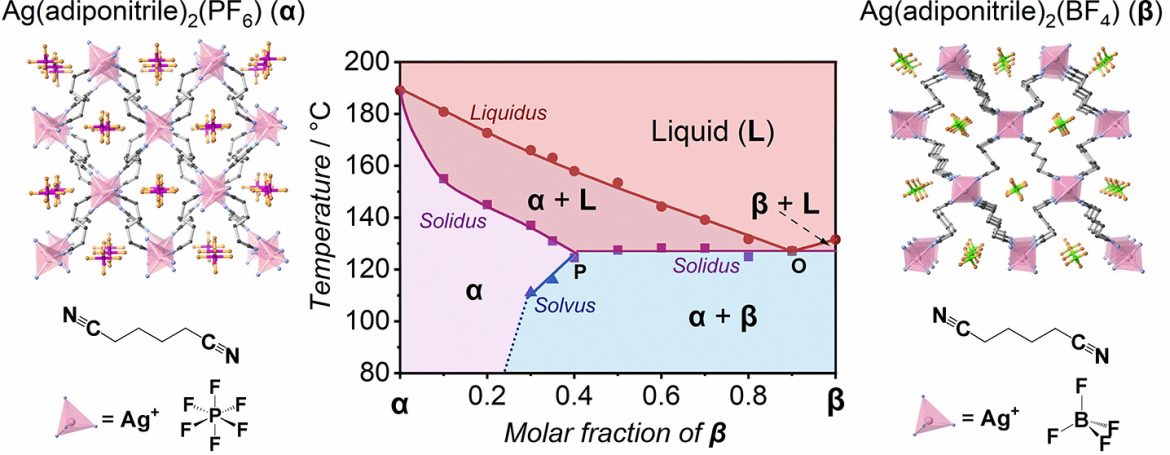Melting Points and Microstructures: Investigating Eutectic Behavior in CPs
Visiting PhD student (Horike lab)
Karnjana Atthawilai
Karnjana Atthawilai
Ms Karnjana Atthawilai, also known as Noey, is a PhD student conducting research in the Horike Lab. Her research focuses on coordination polymers, especially their phase diagrams and microstructures. She has been investigating binary phase diagrams of coordination polymers that exhibit eutectic behavior and explored their potential as latent heat storage materials with stable solid-liquid phase transitions.

Please share with us the significance of your manuscript in terms of its research achievements, impact, or uniqueness.

Designing binary systems of metals or ceramics is a fundamental strategy for controlling the properties and functionalities of materials. For example, the thermal and mechanical properties of binary materials are determined by binary compositions and microstructures. Binary systems are well-studied in metallurgy but remain largely unexplored in the fields of coordination chemistry, including coordination polymers (CP) and metal-organic frameworks (MOFs) sciences.
In this work, I constructed, for the first time, binary phase diagrams of CP/MOFs and investigated the origins of microstructure formation. The binary compounds located at the eutectic points showed potential as latent heat storage materials operating at around 100°C with high energy recovery efficiency, stability across repeated phase transitions, and significant hysteresis between melting and crystallization.
Please tell us what was the most gratifying or inspiring moment for you during this research project.
The most inspiring moment for me was when I first obtained the differential scanning calorimetry (DSC) results. They revealed that the binary compounds had lower melting points than original ones. Meanwhile, powder X-ray diffraction (PXRD) showed the mixed character of the two CPs without any structural collapse. I could not understand the reason for the lower melting points at first because eutectic phenomena were studied only in metallurgy, and the concept was far from CP/MOF chemistry. The unexpected result motivated me to explore the eutectic phenomena of a series of binary CPs, which was a challenging topic within the coordination chemistry field.
Please tell us about the biggest challenge or problem you experienced while conducting your research. How did you overcome it?
I had the most difficulty identifying the eutectic point of binary compounds, which is the point where both components melt simultaneously. After many experiments using different ratios of binary compounds, I was finally able to investigate the binary phase diagrams of CPs with eutectic points. These continued efforts were essential in overcoming this challenge.
Would you consider this work to be a turning point in your overall research direction? If so, how has your research direction changed as a result of this work?
This work had a strong impact on both my research life and personal philosophy: Don’t give up on a bad day; rest and back to work on it. The experience gave me a new perspective for developing future research and tackling challenges ahead.
Please describe the current situation of your career. What is your current position? How has the knowledge and experience gained at iCeMS influencing your career?
I have been collaborating for a long time with iCeMS because I belong to Smart Materials Research Center, which is a Kyoto University’s On-site Laboratory at Vidyasirimedhi Institute of Science and Technology (VISTEC). I was eventually awarded a scholarship and joined iCeMS as a visiting student. iCeMS has provided me with valuable research experiences, and I am enjoying working with the member labs and experiencing the research culture during my stay in Japan.
Paper information
"Binary Phase Diagrams of Coordination Polymers with Eutectic Behaviors"
Karnjana Atthawilai, Hiroyasu Tabe, Kotaro Ohara, Kanokwan Kongpatpanich, Satoshi Horike
Journal of the American Chemical Society |DOI: 10.1021/jacs.4c15317
Published: February 2025